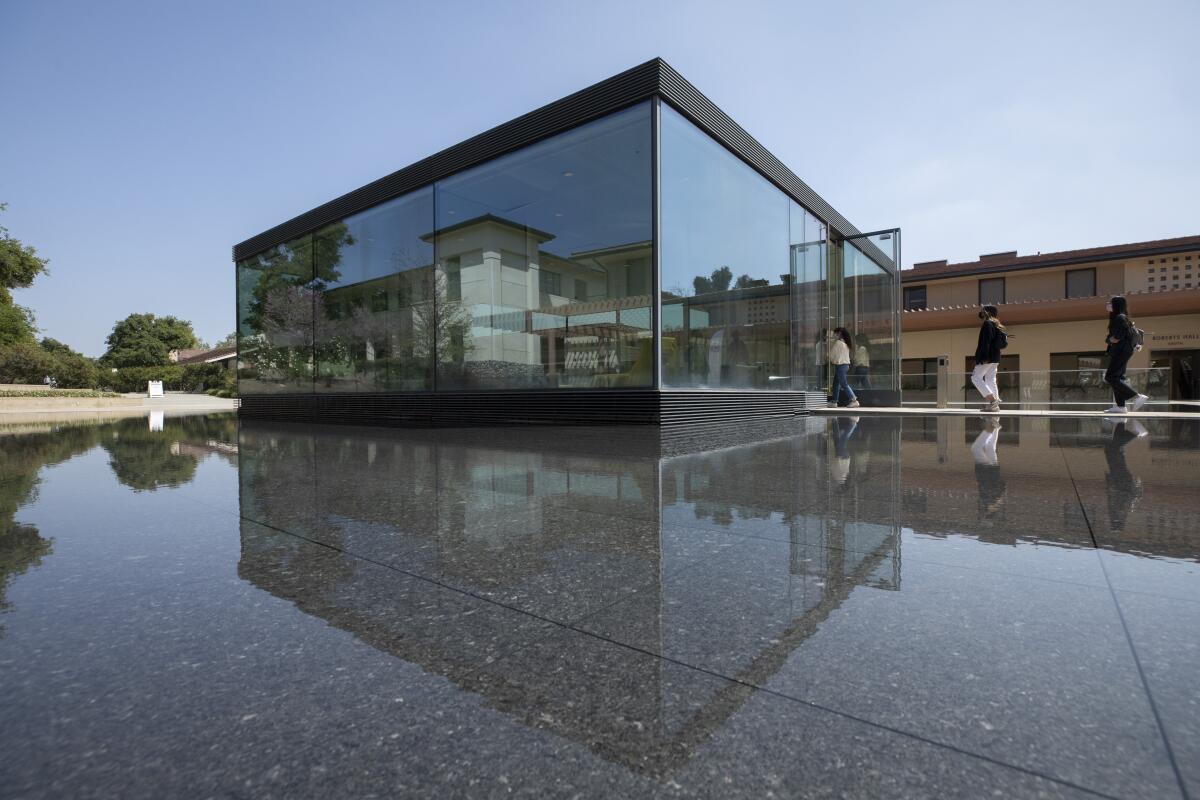Op-Ed: Colleges need to engage in a financial aid ‘arms race.’ Here’s how that could happen

- Share via
Two of the most persistent challenges facing the U.S. are a lack of meaningful jobs and growing income inequality. And these problems are only getting worse.
Sure, there are jobs out there, at fast-food restaurants or fulfillment warehouses desperate to hire someone — anyone. But what we really need are meaningful jobs that anchor people. This means positions that pay a livable wage, provide benefits and stability, and enhance skills so that people can eventually move on to even better jobs.
Without a college degree, it’s hard to get one of those meaningful jobs. Those who join the workforce straight out of high school used to have an easier time finding steady, well-paying work. But opportunities — especially in manufacturing — are disappearing or being automated out of existence. According to U.S. census data, workers with bachelor’s degrees earn roughly twice as much as those with high school educations.
“Work” is rapidly bifurcating into meaningful jobs and crummy jobs, which only increases the gap between the haves and the have-nots — and fuels income inequality.
We can’t begin to tame these intertwined problems until we start doing a better job of making college more affordable for lower- and middle-income Americans. That means making sure students can get through college with as little debt as possible, because debt creates problems of its own. We could start by doubling the annual maximum amount of federal financial aid available through Pell Grants, taking it from $6,500 to $13,000.
When the program was established nearly 50 years ago, its $1,400 limit was enough to cover 75% of the cost of attending a four-year public college.
Today, even the most generous Pell Grant only pays for about 28% of the same education. But a $13,000 grant would cover almost 60% of the average cost to attend a four-year public college, and 26% of the average cost to attend a four-year private, nonprofit college.
Schools also have a role to play in bringing the college affordability crisis under control. U.S. colleges with strong admissions pipelines and large endowments need to commit to meeting the financial needs of every student they admit.
About 75 schools currently promise to meet 100% of students’ demonstrated financial needs. This list includes the Stanfords and Ivies of the world, as well as Denison University, the liberal arts college I lead in Granville, Ohio. But given that there are nearly 4,000 colleges across the country, there’s a lot of room for improvement here. Schools that are in a position to make a difference should make a difference.
Most schools use a combination of grants and federal loans to meet a student’s full demonstrated need. Colleges with resources should use their large and growing endowments to replace loans with grants that don’t need to be paid back.
The hidden and not-so-hidden costs that occur once a student arrives should also be part of the financial aid conversation. They can easily exceed $15,000 on most campuses and can include comprehensive meal plans, books and supplies, and health insurance.
Schools need to move away from the “facilities arms race” that characterized the last few decades and embrace a “financial aid arms race.” A university shouldn’t be measured by how plush its dorms are or how grand the athletic facilities seem, but by how generous its financial aid packages are.
It can happen. It’s a matter of schools taking a hard look at their current endowments and asking: Are we really using them in ways that benefit students the most?
We also need to give families more transparency about how much it costs to attend a particular college. Many families shy away from private colleges because the listed tuition price is not affordable. But these colleges also provide the most financial aid, which means that the average family pays only 46% of the listed price, and lower-income families often pay much less.
In addition, most students start looking at colleges during their junior year of high school but don’t know the actual cost of attending until after they are admitted, often in the spring of their senior year when they may have already made up their minds about where they are going.
There has to be a way for colleges to reveal their true cost earlier in the selection process so families can know which ones they can afford. This is the kind of issue that an organization like the National Assn. for College Admission Counseling could take on because of its mission to influence higher education policy.
The private sector can also help put a college education within reach of more people. Many schools shy away from financial arrangements such as income-sharing agreements, in which a funder basically agrees to bankroll a student in exchange for a cut of the person’s future earnings. Higher-education institutions should not reflexively dismiss such approaches. We should be open to working with entrepreneurs and innovators to develop nontraditional ways for students to be able to afford a college education.
College affordability and income inequality are inextricably linked. Putting a college education within reach of more people will go a long way toward making society more equitable.
Adam Weinberg is the president of Denison University in Granville, Ohio.
More to Read
A cure for the common opinion
Get thought-provoking perspectives with our weekly newsletter.
You may occasionally receive promotional content from the Los Angeles Times.










